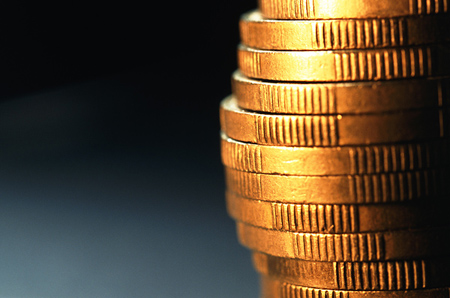(Kitco News) – Futures traders look for gold to build on its recent gains now that the Federal Open Market Committee has surprised markets with a dovish tilt for the second meeting in a row.
After a two-day meeting Wednesday, the Fed’s so-called dot-plot – which shows the expectations on interest rates by individual policymakers – showed that officials collectively do not envision any rate hikes in 2019. By contrast, policymakers had projected two rate hikes back in December.
The Fed’s post-meeting communiqué said continuing economic growth and a strong jobs markets are “the most likely” outcome for the U.S. economy, but nevertheless, officials also said they will be “patient” with monetary policy due to concerns about potential economic slowing. The opening line of the central bank’s monetary-policy statement said that the “labor market remains strong but that growth of economic activity has slowed from its solid rate in the fourth quarter.” The Fed’s economic projections see the U.S. economy growing 2.1% this year, compared to the 3% growth for 2018.
Comex April gold traded as high as $1,320.20 so far Thursday, compared to a low of $1,298.10 on Wednesday. As of 10:35 a.m. EDT, the metal had backed down from the highs, trading up $8.80 for the day to $1,310.50 an ounce.
“The Fed has got our [gold market’s] back,” said Phil Flynn, senior market analyst with at Price Futures Group. “This pronouncement that the Fed is not only going to keep interest rates unchanged this year, but perhaps most of next year, is giving the gold market quite a boost.”
Further, the Fed’s lower economic-growth forecast may leave some investors thinking they should add some safe-haven alternatives, such as gold, Flynn said. Also, he said, other countries are also loosening monetary policy. Against this backdrop, Flynn said gold could test resistance around $1,333 and challenge $1,400 down the road.
“This is probably the best scenario that we’ve had for the gold market since the uptrend that we started last summer, which was derailed [since the February highs],” Flynn said.
Daniel Pavilonis, senior commodities broker with RJO Futures, said he thinks gold could claw its way back to the February high, which was $1,349.80 for the April futures. Then, if the market is able to generate momentum-based buying, “I think we break out and start to channel much higher,” Pavilonis added.
“As long as the Fed is managing everything delicately and not raising rates, that is going to signal to the markets that we see inflation. The metals are going to up because of that,” Pavilonis said.
Pavilonis suggested maybe the Fed wanted to hold off tightening monetary policy in December but felt compelled to hike rates anyway to show policymakers’ independence, since President Donald Trump had been blasting the Fed for its prior rate hikes.
Sean Lusk, director of commercial hedging with Walsh Trading, figures gold will move higher, but also cautioned that pullbacks can be expected on the way. If the Fed is not going to hike rates again for some time, this is bullish for gold, he said. However, he continues, this has also been priced into the market.
“You’re not going to be up in a straight line,” Lusk said, commenting that the metal could have trouble advancing at times when equities hold up and the dollar strengthens. “If the bull can’t be fed every day, you’re susceptible to some back-and-fill on the charts.”
Still, Lusk said he would be inclined to use price dips as buying opportunities. “The path of least resistance is higher, not lower,” he said.
Technically, Lusk added, key support levels to hold for April gold are the area around $1,298, then $1,282-$1,280. He put nearby resistance around $1,330.
Meanwhile, Charlie Nedoss, senior market strategist with LaSalle Futures Group, described himself as skeptical of the rally, wondering if the gold market got ahead of itself.
“The dollar ran toward the downside yesterday and has a bid today,” he commented. “I think gold ran its course….I have doubts that we’re going to follow through much further.”
Nedoss pointed out that concerns in other parts of the world, such as Brexit, may still underpin the dollar. And, he said, the Fed may not have been as dovish as many think, commenting that policymakers are merely back to being data dependent.
“The data has been mixed at best. But I don’t think they’re going to start lowering rates, let’s put it that way,” Nedoss said.
He suggested much of the rally may have been simply short covering, where market participants with bearish positions – called shorts – were buying to exit from those trades.

























